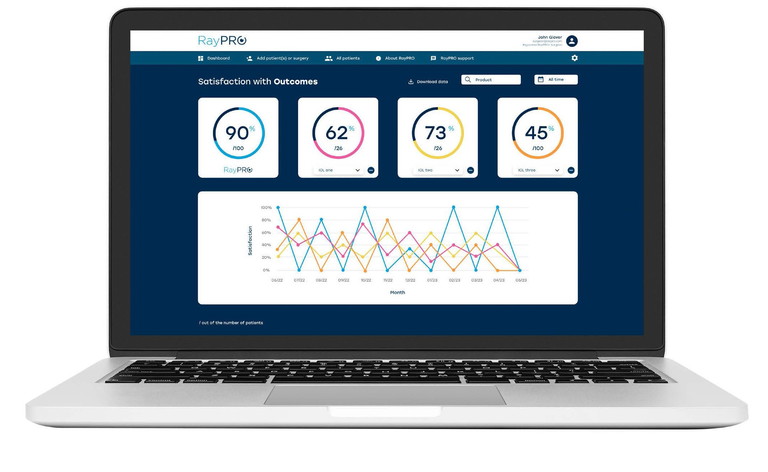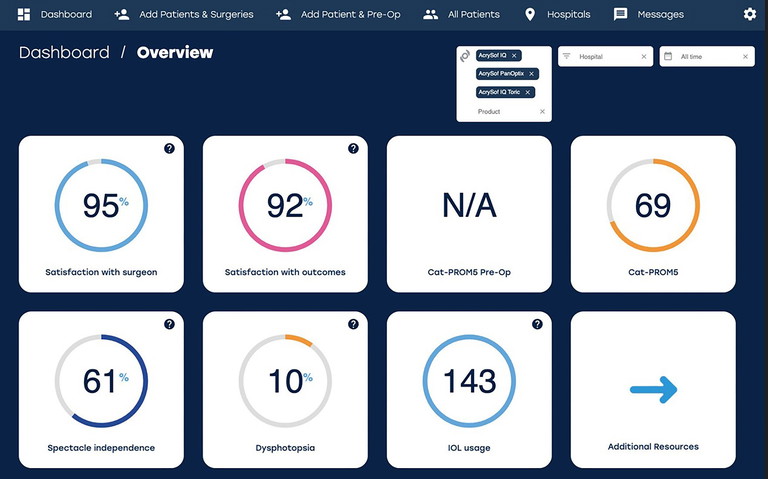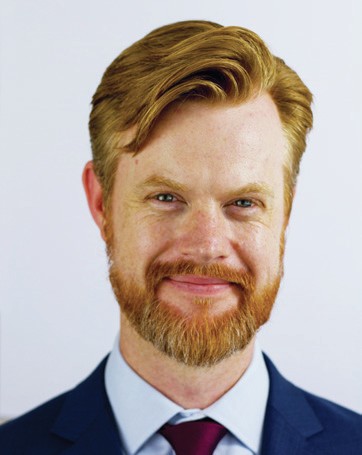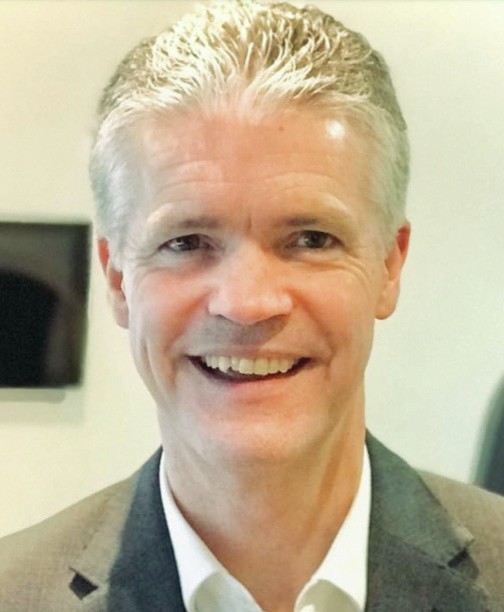mitechnology
RayPro’s Agnostic Platform:
Transforming Cataract Outcomes
In an era where patient satisfaction increasingly drives surgical excellence, a groundbreaking digital platform is transforming how ophthalmologists measure and understand real-world outcomes following cataract surgery. RayPro, developed by the United Kingdom-based Rayner, represents a paradigm shift from traditional follow-up methods to comprehensive patient-reported outcome measures (PROMs) that capture the lived experience of patients for up to three years after they’ve left the clinic.
WRITER Melanie Kell

The platform emerged from a simple, yet profound question posed by Rayner CEO Tim Clover during industry dinner conversations with surgeons. “How good are you?” he would ask. The inevitable response, “I’m really good, one of the best”, led to his follow-up challenge: “Show me something that tells me you are that good.”
“Until RayPro came along, there wasn’t anything,” explained Dr Stanley Windsor, Rayner’s Head of Digital Health. “Whereas now Tim can go to a surgeon at dinner and say, ‘how good are you?’ and they can say, ‘well, 98% of my patients with this lens think I’m this good and 94% of patients with this lens think I’m that good’.”
This quantifiable approach to surgical outcomes has resonated strongly within the ophthalmic community, particularly among premium intraocular lens (IOL) surgeons who recognise the value of evidence-based practice validation.
DEVICE-AGNOSTIC OUTCOME MEASUREMENT
Unlike many industry platforms, RayPro operates on a device-agnostic philosophy. Surgeons can track outcomes for any IOL manufacturer, not just Rayner products. This approach reflects the platform’s commitment to genuine surgical improvement rather than brand promotion.
“We went on this mission to make RayPro device-agnostic,” Dr Windsor told mivision. “Surgeons can put their competitor lenses in there, and even though we risk that lens showing a better result than ours, we are giving them a platform to make that informed decision.”
The platform currently supports all major IOL manufacturers and has expanded beyond traditional cataract surgery to include outcomes from implantable collamer lenses as well, demonstrating its versatility across refractive procedures.
STREAMLINED IMPLEMENTATION FOR PRACTICES
Recognising that time constraints represent the primary barrier to outcome collection in busy ophthalmic practices, RayPro has been designed for efficiency. The system requires only three pieces of information: patient email address, surgery date, and the IOL implanted in each eye.
“This is a perfect Friday afternoon task,” Dr Windsor explained. “It takes 20 minutes to upload your entire list for the whole week.”
The Excel-based upload system can accommodate data entry, either preoperatively or postoperatively, providing flexibility for different practice workflows.
Once uploaded, the system automatically sends clinic-branded questionnaires at six different timepoints to the patient. The responses build a comprehensive picture of patient experience over time, without ongoing administrative burden.
ANONYMOUS FEEDBACK ADVANTAGE
The platform’s anonymous nature represents a significant advantage over traditional in-clinic feedback collection. “Traditionally, so much of the feedback gathered was while a patient was waiting for the receipt to be made up for their cataract sugery; they’d be asked, ‘can you fill in this patient satisfaction form?’” Dr Windsor noted. “It’s in clinic, it’s not very anonymous. The feedback you get is often inflated.”
RayPro’s completely anonymous system, with patients responding from home, provides more genuine and accurate feedback about their actual experience and satisfaction levels.
SUPERIOR RESPONSE RATES
And according to Dr Windsor, the platform achieves response rates of 52–54%, significantly exceeding the medical industry average of 32–40%. This success stems from careful attention to user experience design. Questionnaires are limited to seven questions maximum – a limit based on research showing dramatic response rate drops beyond this threshold. Additionally, sliding scale responses eliminate the need for written answers, large fonts are available for patients with visual impairments, and there is support for 28 different languages.
“I’ve never understood why patient education is given to people in a written format when they have an eye condition,” Dr Windsor observed. “If you’re struggling to see, why are you being given lots of paper to read? It’s like holding WeightWatchers in McDonald’s.”
REAL-WORLD CLINICAL INSIGHTS
Perth surgeon Dr Graham Furness has leveraged RayPro data to significantly enhance patient counselling. “When we discuss spectacle independence expectations with patients, it is important for patients to understand that everyone’s perception of what constitutes spectacle independence will be different,” he explained to mivision.
This quantitative approach has transformed patient conversations, replacing anecdotal references with evidence-based expectations. Dr Furness noted that patients often arrived saying, ‘My friend had cataract surgery, and now they don’t wear glasses anymore’, but the platform provides concrete statistics to guide realistic expectation setting.
“According to RayPro’s Australian database, 80% of patients report spectacle independence in the distance, 65% report independence at intermediate, and 57% report independence for near following lens surgery.”
CHALLENGING TRADITIONAL ASSUMPTIONS
Perhaps most significantly, RayPro data has challenged long-held industry assumptions about patient satisfaction drivers. Dr Dan Brettell, a surgeon practising on the New South Wales Central Coast and using the platform, described his initial surprise: “When patients come in for their postoperative assessment with good unaided visual acuity for both distance and near, I often find myself mentally chalking up another win. Using RayPro to review these outcomes from a patient’s perspective, I was initially quite surprised that their self-reported satisfaction with their vision did not always line up with what I had considered a great outcome.”
This disconnect between clinical metrics and patient satisfaction has led to more nuanced understanding of surgical success. Research published using RayPro data from six world-leading surgeons revealed that spectacle independence shows only weak correlation with patient satisfaction, while visual disturbances demonstrate strong negative correlation with satisfaction outcomes.1
INDUSTRY-WIDE IOL DEVELOPMENT IMPACT
These findings have influenced broader industry trends, with manufacturers increasingly focussing on dysphotopsia reduction rather than purely spectacle independence. Recent IOL launches, including Rayner’s Galaxy, have described “zero dysphotopsia” or reduced visual disturbances as primary benefits.
“I like to think that we were sort of ahead of that curve and we could see that trend coming, just through the data that we were gathering on RayPro,” Dr Windsor reflected.
QUALITY IMPROVEMENT AND DEVELOPMENT
Beyond outcome measurement, Dr Furness views RayPro as a quality improvement tool.
“Before implementing RayPro, we were already collecting postoperative data routinely at three months to assess refractive stability and outcomes of new IOLs. However, this process was labour intensive and something we reviewed periodically. RayPro provides us with a very quick analysis based on Cat-PROM5 (a five question cataract PROMs) questionnaires.”
The platform has revealed unexpected insights about practice patterns. Dr Furness discovered that while 84% of patients report satisfaction with surgical outcomes, only 6% complain of visual disturbances, suggesting that the remaining 10% of dissatisfaction stems from other factors such as refractive outcomes, dry eye, or unrealistic expectations.
PREPARING FOR EGO CHALLENGES
For colleagues considering patient-reported outcome collection using RayPro or a similar system, Dr Brettell offered pragmatic advice. “I would counsel getting your ego ready for a slightly bumpy landing, but not to hesitate in listening further to our patients once they’ve left the clinic and are using the vision we have helped them achieve out in the real world.
“Patients care little for the hard data of visual results found in most studies – they care instead to know, ‘Will I be happy with what I can see after my surgeries?’ Don’t be afraid to start asking, collecting the data, and making the most of systems like RayPro that make it so seamless.”
GLOBAL MARKET ADOPTION
Australia has emerged as a particularly successful market for RayPro adoption, becoming the second-largest user base globally after the UK. This success reflects both the premium-heavy nature of the Australian cataract surgery market and effective local representation.
“The leading front-end surgeons, the top end of the market, get why this is important and get what the benefit for them is,” Dr Windsor observed. “For those surgeons that are really aspiring to be premium implanting surgeons, tools like RayPro are becoming a necessity.”
BIG PICTURE DIGITAL HEALTH STRATEGY
Looking ahead, Rayner plans to integrate RayPro with a comprehensive patient education platform launching in Australia next year. This expanded system will use AI-generated content to provide consistent, updatable patient education materials that complement outcome measurement.

RayPro Dashboard.

Dr Dan Brettell

Dr Graham Furness
“A better educated patient is a more satisfied patient postoperatively,” Dr Windsor explained. “There’s loads of literature that already tells us that, but no one’s done it in ophthalmology yet.”
The integrated approach promises to address the complete patient journey from initial consultation through long-term outcome measurement, potentially reducing chair time by 12% and surgical administrative time by 40% through improved patient preparation and reduced postoperative queries.
It’s all part of Rayner’s strategy to enable the ophthalmic community to embrace evidence-based practice improvement that prioritises patient education and satisfaction alongside clinical excellence.
RayPro is free for surgeons and can be accessed through Rayner’s digital platform. For more information, visit: rayner.com/global/raypro.
This article was sponsored by Rayner.
Reference
1. Botta J, Barsam A, Windsor S, et al. Factors influencing outcome satisfaction after cataract surgery: patient-reported insights from the RayPro database. BMC Ophthalmol. 2024 Dec 18;24(1):528. doi: 10.1186/s12886-024-03800-3.